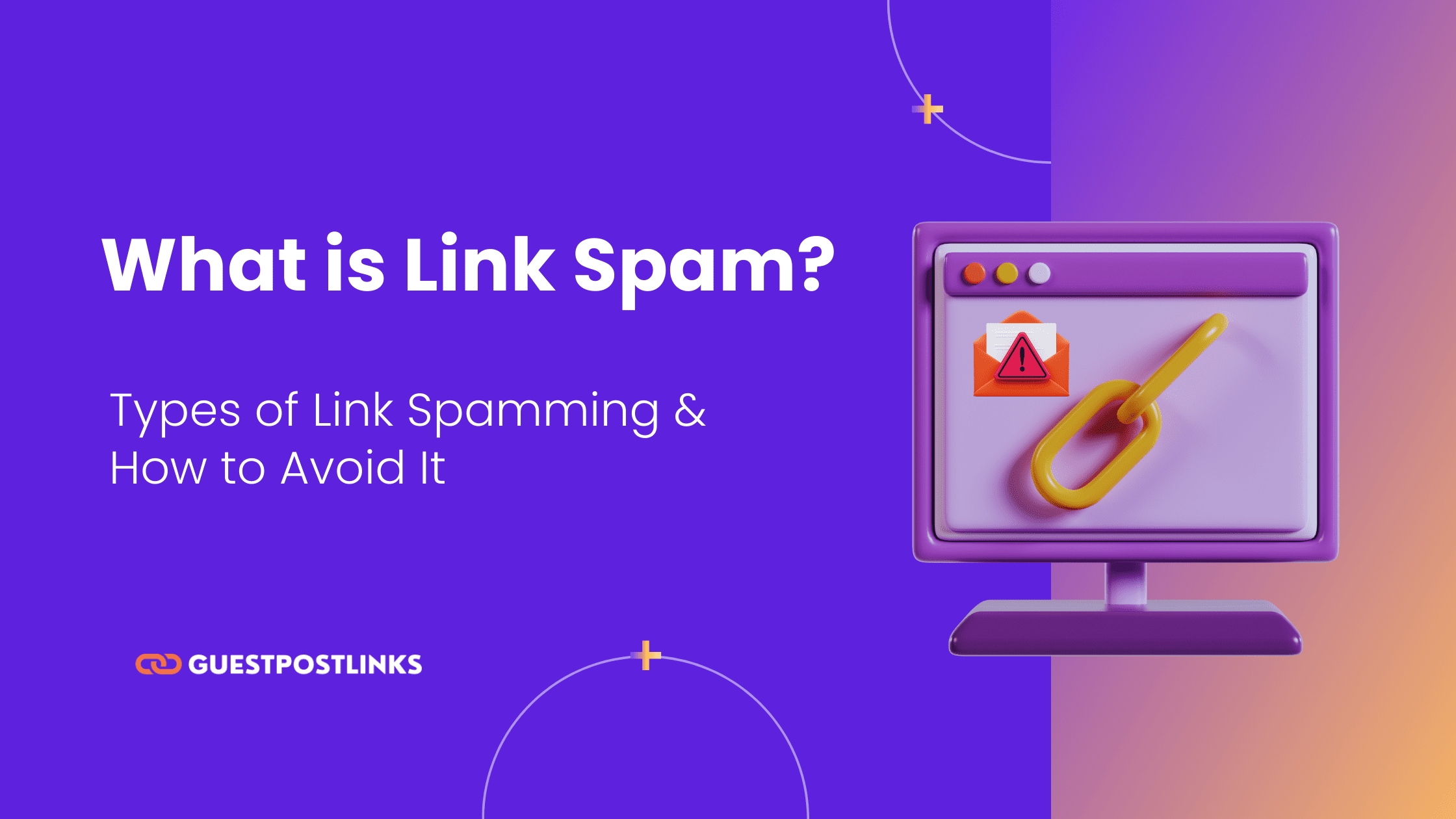Have you ever come across websites that seem to have an excessive number of irrelevant links pointing to their pages?
Here is a example of link spam, a manipulative practice that aims to artificially boost a website’s search engine rankings.
In this blog post, we will explore what link spam is, the various types of link spamming techniques that create by spammers, and most importantly, how you can avoid falling victim to these tactics.
What is Link Spam?
Link spam refers to the practice of generating a large number of low-quality or irrelevant backlinks with the intention of manipulating search engine algorithms. These links are typically created in an automated or deceptive manner, aiming to artificially inflate a website’s authority and improve its search rankings. However, link spam is considered a violation of search engine guidelines and can lead to severe penalties.
Types of Link Spam
Spam Posting
Spam posting involves leaving irrelevant or promotional links in online forums, comment sections, or guestbooks. Spammers often use automated tools to distribute these links widely across the web.
Hidden Links
Hidden links are links that are embedded within a webpage’s code or disguised to be invisible to users. These links are typically intended to manipulate search engines without being noticed by website visitors.
Link Farms
Link farms are networks of websites that exist solely for the purpose of creating backlinks. These websites often have low-quality content and provide little value to users.
Nofollow Links
Nofollow links are HTML attributes that instruct search engines not to follow or pass any authority to the linked website. While nofollow links can be legitimate, spammers may use them to mask their manipulative link-building activities.
Single-Post Blogs
Single-post blogs are websites that consist of a single blog post with numerous links. These blogs are usually created to manipulate search engine rankings and provide little value to users.
Article Marketing
Article marketing involves submitting low-quality articles to various article directories solely for the purpose of obtaining backlinks. This technique has been widely abused by spammers in the past.
Directory Spam
Directory spam refers to the practice of submitting a website to low-quality or irrelevant online directories solely for the purpose of gaining backlinks. These directories often offer little value to users.
Comment Spam
Comment spam involves leaving irrelevant or promotional comments on blog posts or articles, usually accompanied by a link back to the spammer’s website.
Forum Spam
Forum spamming entails posting irrelevant or promotional messages on online forums, often accompanied by links. Spammers may use automated tools to target multiple forums simultaneously.
Profile Spam
Profile spamming involves creating user profiles on various websites or forums with the sole purpose of adding links in the profile’s bio or signature section.
Cleansing Domains
Cleansing domains refers to the practice of acquiring expired or penalized domains and using them to create backlinks to a target website. Spammers exploit the residual authority of these domains for manipulative purposes.
Site-Wide Links
Site-wide links are links that appear on every page of a website, usually in the header, footer, or sidebar. Excessive use of site-wide links can raise red flags to search engines.
Paid Links
Paid links involve purchasing backlinks from other websites with the intention of manipulating search engine rankings. Search engines consider this practice a violation of their guidelines.
Link Bait and Switch
Link bait and switch refers to the practice of initially creating high-quality, link-worthy content but later replacing it with unrelated or low-quality content after gaining backlinks.
Low-Quality Press Release Syndication
Low-quality press release syndication involves distributing press releases with little to no newsworthy value across various online platforms solely for the purpose of obtaining backlinks.
Also Read: Ultimate SEO Glossary: 499+ Essential SEO Terms You Need to Know!
How Does Google Fight Link Spam?
Google has been engaged in a continuous battle against spam since its inception.
A significant milestone in this ongoing struggle occurred in 2012 with the release of the initial version of the Penguin algorithm update. This update aimed to combat websites that employed manipulative link schemes, representing a crucial turning point in Google’s efforts. In 2016, the Penguin algorithm had become an essential component of Google’s core algorithm.
Recognizing the escalating challenges posed by spam and malicious content, Google adopted artificial intelligence (AI) to identify websites that relied on manipulative link-building practices. In 2018, they introduced SpamBrain, an AI-powered system designed to prevent spam.
In a more recent development, in December of 2022, Google introduced a new update specifically targeting link spam. This update represents another significant stride in mitigating the impact of spammy and “unnatural” links.
It is important to highlight that Google rigorously assesses the pages included in its index for spam content. Automated systems handle the detection and resolution of approximately 99% of spam issues. The remaining 1% is diligently addressed by Google’s dedicated webspam team through manual intervention.
If your website receives a manual action, it will be indicated in Google Search Console under the “Security and Manual actions” section. Such an action can result in a noticeable decline in search rankings and organic traffic, and in some cases, your site may even be entirely removed from search engine results pages (SERPs).
Is Link Spam Important?
Link spam should never be considered an important or effective SEO strategy. It violates search engine guidelines and can lead to severe penalties, including decreased rankings or even complete removal from search results.
How Link Spam Started?
Link spamming originated from attempts to manipulate search engine rankings by exploiting loopholes in algorithms. As search engines became more sophisticated, they developed measures to combat these practices.
How to Avoid Link Spam?
To avoid link spamming, focus on creating high-quality content that naturally attracts valuable backlinks. Follow best practices such as building relationships with reputable websites, using relevant anchor text, and diversifying your backlink profile.
The Consequences of Link Spamming
Link spamming can have severe consequences, including penalties from search engines that result in decreased visibility, loss of organic traffic, and damage to the website’s reputation.
How to Recover From Link Spam Penalties
If your website has been hit with a link spam penalty, take immediate action by identifying and removing spammy links. Submit a reconsideration request to the search engine, demonstrating your commitment to adhering to their guidelines.
FAQs
No, using link spam on your competitors is not recommended. Engaging in unethical practices can lead to penalties for your own website and tarnish your reputation.
A link spam update refers to an algorithmic update by search engines like Google that specifically targets and penalizes websites engaged in link spamming practices.
Spam link SEO refers to the use of manipulative tactics, such as link spamming, to artificially inflate search engine rankings. It is an unethical practice and should be avoided.
Backlink spamming refers to the creation of low-quality or irrelevant backlinks to a website with the intent of manipulating search engine rankings. It is a form of link spamming.





 No publishers in the cart.
No publishers in the cart.